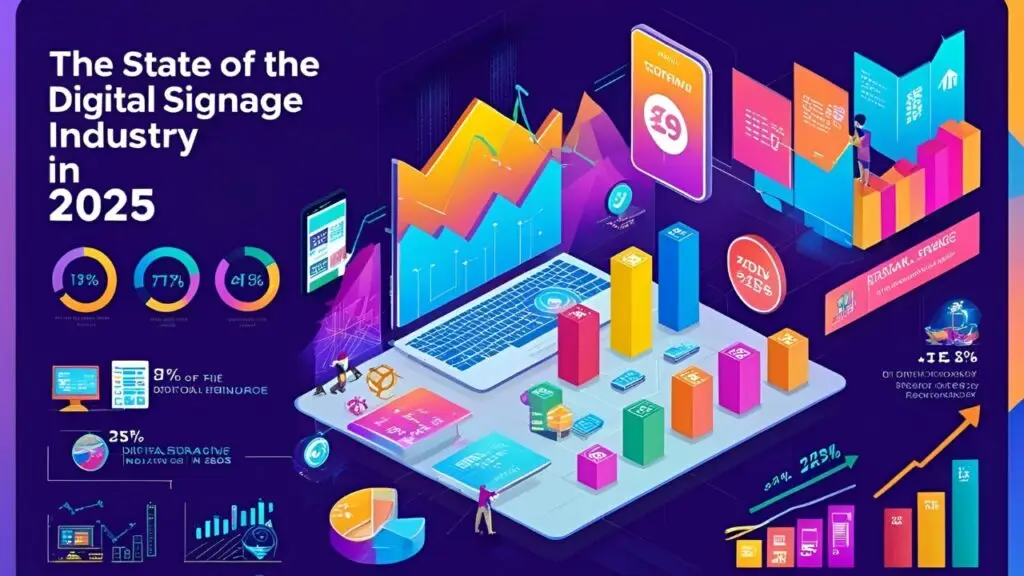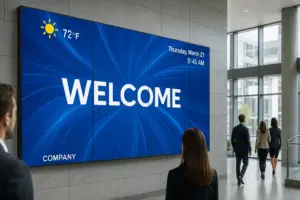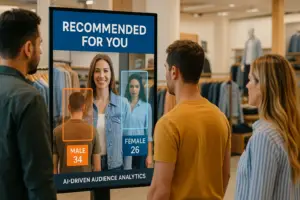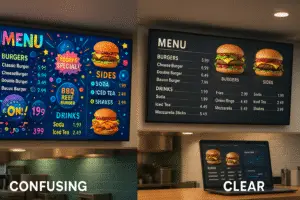Digital signage isn’t a novelty anymore, it’s core business infrastructure. Whether you’re in retail, healthcare, education, or transit, those screens on your walls are expected to work harder than ever, delivering real results you can measure.
After consulting on 50+ digital signage projects across industries, I’ve seen the shift firsthand: from flashy displays to smart, data-driven communication tools that inform, engage, and drive ROI.
To help you stay ahead, I’ve pulled together 10 must-know digital signage stats for 2025. These numbers aren’t just impressive, they’re backed by solid research and real-world experience. More importantly, they come with clear takeaways to help you assess whether your signage strategy is built for where the industry is going.
1. The Market Has Reached Critical Mass: $21.8 Billion and Growing
The global digital signage market hit $21.8 billion in 2024 and is on track to reach $35.7 billion by 2030, growing at a healthy 8.5% CAGR. To put that in perspective, the digital signage industry is already bigger than the global podcast market and closing in on the size of the streaming video space.
This growth stems from steady expansion across all major sectors. Retail, healthcare, education, corporate communications, and transportation are all driving adoption as they recognize the need for dynamic, real-time content delivery systems.
What This Means For You:
Still treating digital signage like a “nice-to-have”? You’re already behind
Healthcare, banking, and other cautious industries are now investing aggressively. Because dynamic content drives measurable results
This growth isn’t just some new trend. It’s your cue to scale smart, not keep debating whether to get started
2. Retail Still Leads, But the Real Growth Is Happening Elsewhere
Retail still claims the largest slice of global digital signage spend at 25%, but the fastest growth is coming from sectors that are traditionally slower to adopt tech:
Healthcare: 15%
Hospitality: 18%
Transportation: 12%
Retail itself is also evolving. Growth is no longer limited to big-box giants. Convenience stores, pharmacies, and QSRs are increasingly adopting digital signage for real-time updates, dynamic menus, and local promotions.
What This Means for You
The biggest growth in 2025 is outside retail. Healthcare, transit, and hospitality are where demand is heating up
Don’t sell just on ad potential. Buyers want signage that improves operations, navigation, and service delivery
Healthcare and transit deals are bigger and longer. They often involve multi-year rollouts and system-wide integration
If you’re in the signage space, now’s the time to reposition your value proposition for efficiency and experience, not just impressions and clicks
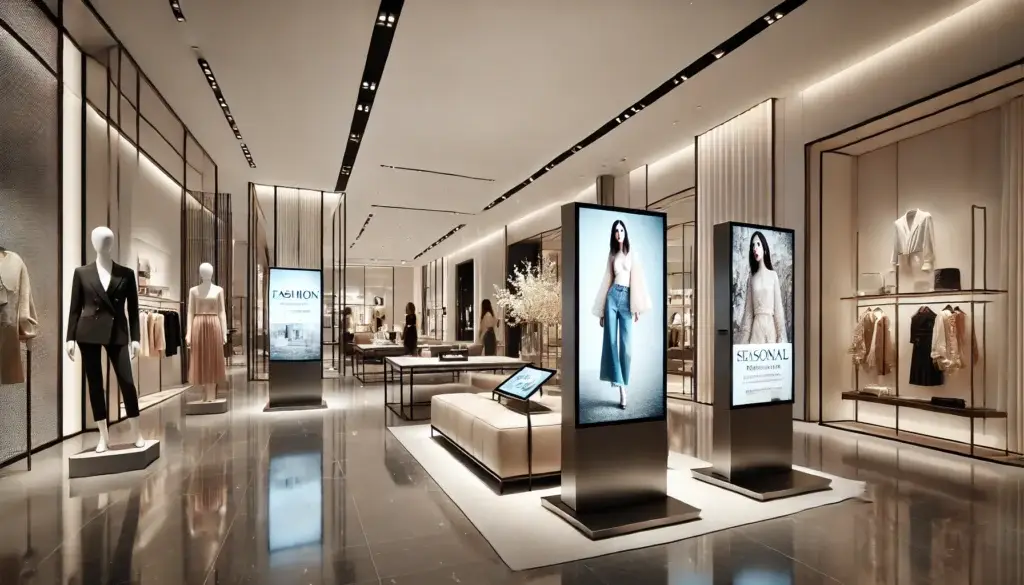
3. Cloud-Based Signage Now Powers 65% of New Deployments
The move to SaaS or clou-based digital signage platforms is no longer a trend, it’s the new standard. 65% of all new signage deployments now run on cloud-based systems, and for good reason. These platforms offer faster rollouts, real-time content updates, easier scalability, and fewer technical headaches. Especially for organizations managing multi-location networks.
In a recent digital signage project with a small retail chain, I led the migration from an outdated, on-premise CMS to a cloud-native solution. The results? Content deployment time dropped from days to minutes, and IT support requests were down 78% in just three months. That’s not just convenience, it’s measurable ROI.
What This Means for You
Cloud-first platforms deliver faster, smarter, and more secure digital signage, period.
Total cost of ownership (TCO) is lower over time. Fewer servers, less maintenance, and faster support
IT teams prefer cloud-native systems that plug into existing tools like Azure, Okta, and enterprise SSO
If you’re still using on-premise software and FTP file transfers, you’re on borrowed time. Modern signage demands modern infrastructure

4. Interactive Signage Is Growing Fast
Interactive digital signage isn’t just a shiny add-on anymore, it’s driving real results. From self-checkout kiosks and interactive wayfinding to hospital check-ins and digital product catalogs, interactive deployments have surged 42% since 2022.
But here’s the catch: success still hinges on user experience. In a recent UX testing project for a major shopping mall, we found that reducing the number of touches needed to complete a task by just one tap improved user completion rates by 36%. That’s the power of small UX wins.
What This Means for You
-
Frictionless design is everything. Especially in stressful environments like hospitals, airports, or transit hubs
-
You don’t need pricey kiosks to go interactive. Simple QR codes and mobile triggers can deliver impact at lower cost
-
Test with real users, not just your team. Stakeholders aren’t always your audience
-
Track the right KPIs: Look beyond clicks to measure completion rates, dwell time, bounce rates, and user flow
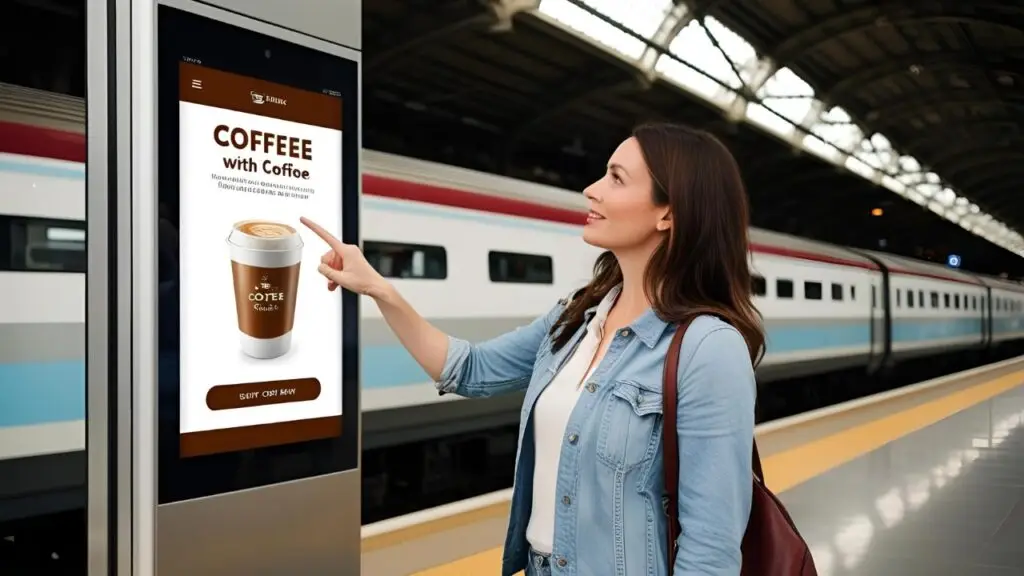
5. Programmatic DOOH Reaches Maturity: 31% of DOOH Spend Now Programmatic
Digital Out-of-Home (DOOH) advertising generated $15.9 billion globally in 2024, with programmatic transactions accounting for 31% of spend. Up dramatically from just 12% in 2021. This represents a significant shift toward automated, data-driven ad buying.
Modern programmatic DOOH enables real-time triggers, audience-based targeting, and dynamic content based on factors like weather conditions, time of day, or local events. Capabilities that static rotation systems simply can’t match.
What This Means For You:
- If your digital signage network isn’t considering ad monetization, you’re leaving revenue on the table
- Advertisers increasingly demand accountability and metrics similar to online advertising
- Expect to see more CMS vendors building SSP/DSP integrations directly into their platforms
- First-party data collection is becoming critical for effective targeting
Looking to ride the digital signage wave? Book a free consultation!
6. Retail Media Networks Are Booming, But Most Will Fail
Retail Media Networks (RMNs) are growing fast. In fact, they saw 53% growth last year, and top retailers report 2.8× higher conversion rates from in-store digital signage campaigns compared to traditional media. But there’s a catch: Amazon and Walmart still dominate, pulling in over 84% of total RMN ad spend.
From my firsthand experience consulting on two RMN launches this year, I’ve seen where things go wrong. Poor data quality, lack of standardization, and tech stacks that can’t scale are the most common failure points.
What This Means for You
More screens ≠ better results. Success hinges on clean, actionable data
Advertisers want attribution. Link in-store ad exposure to real sales or don’t bother
The most effective RMNs mix utility with ads (think: dynamic menu boards, digital wayfinding, real-time info)
Mid-size retailers should partner, not build alone. Platform providers and data integrators can fill the gaps faster and smarter
RMNs have huge upside, but only if they’re built on strategy, not screens. Need help evaluating whether to build, buy, or partner? Let’s map it out.
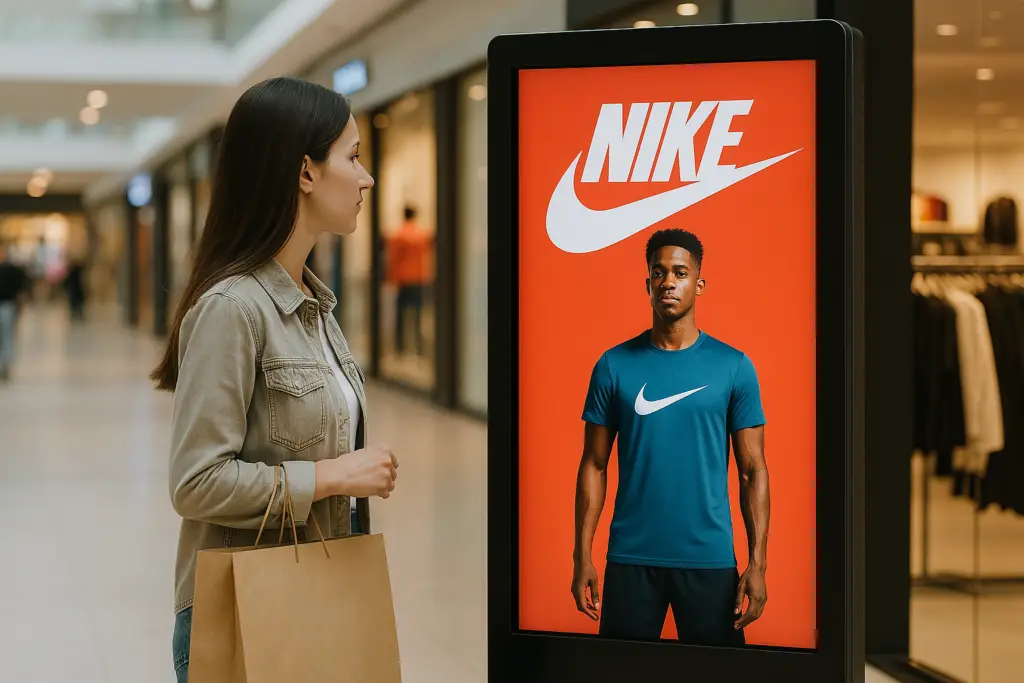
7. LED Is Taking Over
LED is no longer just for flashy flagship installs. Thanks to falling costs and better performance, LED display adoption is now growing at an impressive 11.2% CAGR. It’s rapidly overtaking LCD in many sectors.
Fine-pitch indoor LEDs have become more affordable, while outdoor deployments are shifting almost entirely to LED, driven by its superior visibility and durability.
What This Means for You
LED is now viable for mid-size projects, not just massive budget builds
Expect lower long-term costs: longer lifespan, better durability, and less maintenance
LED offers real advantages: no bezels, higher brightness, better outdoor resilience, and creative flexibility (curves, corners, custom sizes)
For best value, go hybrid. Use LED in high-impact zones (lobbies, feature walls) and reserve LCD for standard messaging areas
8. System-on-Chip Displays Become Standard: Lower Costs, Fewer Failure Points
System-on-Chip or SoC displays, which integrate media players directly into the screen, are fast becoming the industry standard. Major manufacturers like Samsung, LG, and Philips now ship SoC by default. Especially in retail, QSR, and education sectors where simplicity and scale matter.
In a recent 25-location rollout I consulted on for a national restaurant chain, moving to SoC cut hardware costs by 22% and slashed installation time from 4 hours to just 45 minutes per site. That’s real savings in both time and labor.
What This Means for You
Faster installs, fewer cables, fewer things that break. SoC reduces friction at every stage
Perfect for organizations with limited IT resources or distributed networks
Check CMS compatibility. Not all platforms fully support SoC hardware
Factor in lifecycle savings. SoC displays typically use less power, generate less heat, and need fewer repairs
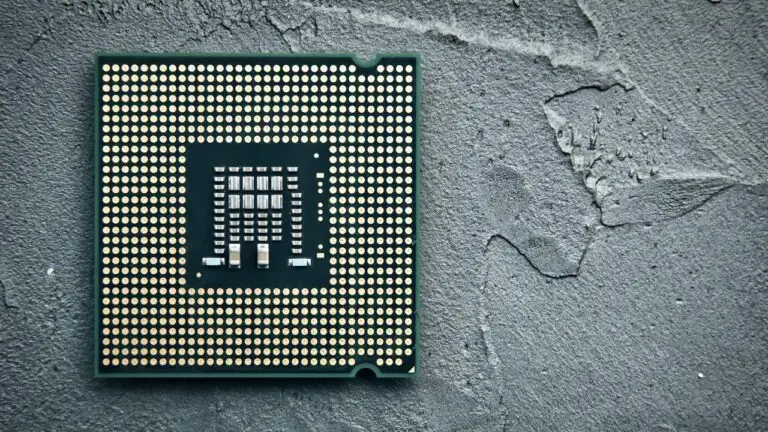
9. Energy Efficiency Becomes a Competitive Advantage
Today’s digital signage hardware consumes about 30% less energy than systems from just five years ago. Thanks to improved power management, System-on-Chip (SoC) architecture, and intelligent content scheduling, energy savings aren’t just possible. They’re built in.
With sustainability performance now baked into procurement scoring, energy-efficient signage has shifted from “nice-to-have” to must-have. Especially in RFP-driven sectors like government, education, and enterprise.
What This Means for You
Energy savings are a selling point, not just a utility bill benefit
Simple features like brightness dimming and smart scheduling play a key role in reducing power usage
RFPs increasingly require documentation of sustainability metrics. Be ready to show your math
Clients are asking: “How green is your tech?”And the right answer can win the deal
10. Digital Signage Drives Sales: 24–38% Lift for Promoted Items
Retailers using digital signage aren’t just improving aesthetics. They’re boosting revenue. Data shows a 24–38% increase in sales for products featured on screens, based on real-world in-store performance across multiple retail categories.
In a public A/B test I saw for a specialty retailer, digital endcap displays outperformed traditional printed signage by 32.5%. Same product, same price, same shelf location. The only difference? The screen.
What This Means for You
Content is king. Low-effort visuals = low returns
Test and refine constantly. Performance varies by store, audience, and time of day
Start by promoting products that already respond well to traditional marketing
If possible, set up control stores or zones to measure true sales lift and optimize strategy
Final Word: You’re Either Moving Forward or Falling Behind
If these numbers made you feel like you’ve got some catching up to do, good. Better now than six months from now. The digital signage industry isn’t slowing down and neither are your competitors.
Need help making sense of your signage strategy? Whether you’re overhauling a dated network or just trying to prove ROI to your boss, I can help.
📩 Let’s chat. I offer strategy sessions, audits, and guidance tailored to retail, healthcare, hospitality, and any brand serious about making signage work harder.
Learn more in my full Digital Signage Software insights archive
FAQ
What’s the difference between digital signage and digital out-of-home (DOOH) advertising?
Digital signage is any screen-based system used to communicate or display content in a physical space—think menus, wayfinding, or employee updates. DOOH refers specifically to ad-based content on public screens, like billboards or transit displays. The key distinction? DOOH sells impressions. Digital signage serves messages. That said, the two are increasingly blending thanks to programmatic tools.
Is digital signage still worth the investment in 2025?
Absolutely—especially if you’re using it strategically. With cloud-based software, energy-efficient hardware, and content automation, modern signage delivers real ROI. We’re seeing 24–38% sales lifts in retail and major engagement improvements in healthcare and corporate environments. But the key is this: bad content on a great screen is still bad signage. Execution matters.
How do I choose the right digital signage software?
Start with your use case. Are you managing menus across 100 locations? Delivering emergency alerts on a campus? Launching a retail media network? Look for platforms that support system-on-chip displays, allow remote content management, and offer real-time analytics. Bonus points if it integrates with your existing systems. Need help vetting options? That’s literally what I do.

